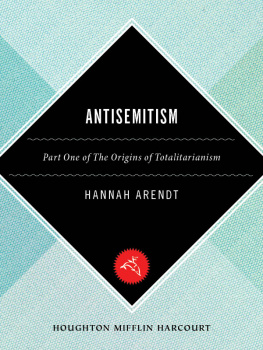Viennas respectable antisemites
Viennas respectable antisemites
A study of the Christian Social movement
MICHAELCARTER - SINCLAIR
Manchester University Press
Copyright Michael Carter-Sinclair 2021
The right of Michael Carter-Sinclair to be identified as the author of this work has been asserted by him in accordance with the Copyright, Designs and Patents Act 1988.
Published by Manchester University Press
Altrincham Street, Manchester M1 7JA
www.manchesteruniversitypress.co.uk
British Library Cataloguing-in-Publication Data
A catalogue record for this book is available from the British Library
ISBN 978 1 5261 4486 7 hardback
First published 2021
The publisher has no responsibility for the persistence or accuracy of URLs for any external or third-party internet websites referred to in this book, and does not guarantee that any content on such websites is, or will remain, accurate or appropriate.
Cover image: Wilhelm Gause, Ball der Stadt Wien, 1904. Historisches Museum der Stadt Wien / Wikipedia. Public domain.
Typeset Deanta Global Publishing Services
Contents
I have received so much valuable assistance and guidance while attempting to produce this work that it is impossible to thank everyone in the available space. I therefore apologise to anyone I may have missed. Special gratitude is due to the following people for the extensive help they have provided.
I am thankful for the assistance of Dr Johann Weiensteiner and his colleagues in the Archive of the Archdiocese of Vienna, as I am for the willing support of Herr Michael Winter and Herr Bruno Splichl at the Federal Police Archive, Vienna. Similarly, Frau Birgit Hoffmann and Frau Martha El Hadidi and their colleagues at the Wienbibliothek im Rathaus were constantly cheerful and helpful to me, as were numerous staff at the Austrian National Library and the British Library book and newspaper collections.
A number of academics in the field gave me thoughtful advice, sometimes face to face, sometimes by e-mail, always encouragingly. These have included Professor Lothar Hbelt, Professor Wolfgang Maderthaner, Dr Winfried Garscha and Dr Susanne Schedtler and her colleagues. I am grateful to Professor R.J.W. Evans and Professor David Rechter, who gave me the opportunity to share some of my thoughts at their seminar in Oxford, and to other academics who invited me to speak at their colleges. The two peer reviewers who read an early version of part of this script gave me excellent new ideas on how to approach the work.
At Kings College, London, Dr Jim Bjork, Professor Stephen Lovell and Professor Richard Vinen helped me in many different ways. The Department of History gave me invaluable support by extending my association there. Dr Michael Rowe has been exceptional, both as the academic supervisor for my PhD, then when I undertook this work as post-doctoral research. I am grateful to him on many counts: for his advice, encouragement, his good humour, insistence on intellectual rigour and patience. Emma Brennan and Alun Richards at Manchester University Press made this final stage of producing a book as smooth as I could have wished.
Finally, none of this would have happened without the constant and loving support of my wife, Christine. She encouraged me to make the leap back into the study of history, knowing how much history in general, and this study of Vienna in particular, meant to me. This work has taken a number of years, and Christine has never lost faith that it would be completed and be worthwhile. For this, and for all the other things, I am so much more than grateful to her.
Any errors are, of course, my own.
Translations
All translations from the original languages, unless taken from a work already translated into English, are mine. Any mistakes or misunderstandings are therefore mine.
Place Names
In the multilingual Habsburg Empire, the language used for place names formed a source of much conflict. In this work, where a commonly accepted English version of a place name is available, it is used. Since the vast majority of references to other place names that came from the archives were in German, the German name is generally used in these instances. Where necessary, an indication is given of the name of a place as it would appear in current English usage.
ARCHIVES AND MATERIALS CONSULTED
PARISH NEWSLETTERS
Abbreviation | Original Title |
AO Pfarrblatt | Alt-Ottakringer Pfarrblatt |
AV Pfarrblatt | Katholische Aktion in der Alservorstadt , changed to Pfarrblatt der Alservorstadt in October 1938, after Catholic Action was suppressed |
Br Pfarrblatt | Breitenfelder Pfarrblatt |
Gr Pfarrblatt | Grinzinger Pfarrnachrichten |
HG Pfarrblatt | Heiliger Geistbote |
Hs Pfarrblatt | Hernalser Pfarrblatt |
MT Pfarrblatt | Maria-Treu, Piaristenkirche Monatsblatt |
NL Pfarrblatt | Neulerchenfelder Pfarr-Blatt |
NO Pfarrblatt | Mitteilungen der Pfarre Neu-Ottakring |
SLG Pfarrblatt | St Laurenz-Gertrudsblatt |
SR Pfarrblatt | St Rochus Pfarrblatt |
SJE Pfarrblatt | St Johann Evangelist Pfarrblat |
We Pfarrblatt | Weinhauser Pfarrblatt |
NEWSPAPERS WHOSE ABBREVIATIONS APPEAR IN THE FOOTNOTES
Abbreviation | Original Title |
A-Z | Arbeiter-Zeitung |
dkB | Das kleine Blatt |
DVB | Deutsches-Volks-Blatt |
M-Z | Montags-Zeitung |
NFP | Neue Freie Presse |
NWB / NWB-IB | Neuigkeits-Welt-Blatt and its illustrated supplement |
NWJ | Neues Wiener Journal |
NWT | Neues Wiener Tagblatt |
NZ | Neue Zeitung |
Volksfreund | sterreichischer Volksfreund |
RP | Reichspost |
SAM | Sportblatt am Mittag |
Stadt und Land | Volksblatt fr Stadt und Land |
Dizesanblatt | Wiener Dizesanblatt |
W-Z | Wiener Zeitung |
MISCELLANEOUS
AHYB | Austrian History Yearbook |
BL | sterreichisches Biographisches Lexikon 18151950 |













